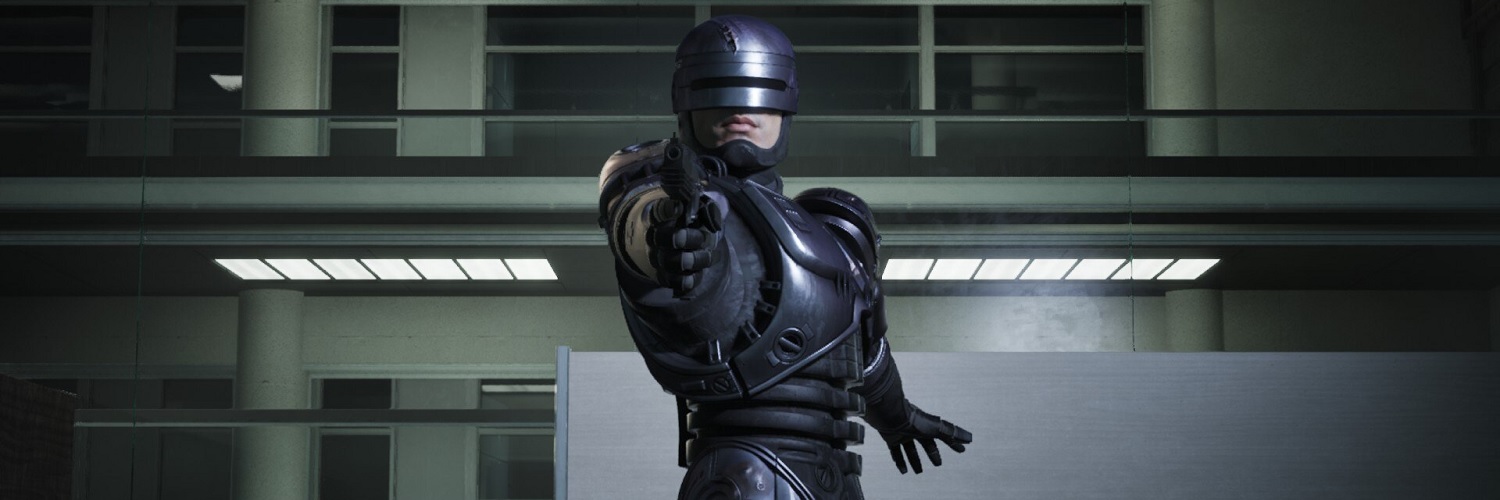
RoboCop: Rogue City PC Review
I cannot imagine how excited little young me would have been if RoboCop: Rogue City was able to be played back when I saw the original RoboCop in the early 90s, a few years after its original release in 1987. RoboCop: Rogue City is essentially a game that makes you RoboCop, you feel you are roleplaying your desires to uphold the law and serve the public trust as a part man, part machine, all heavy-footed walking mechanism (those footstep sounds never get old!). The developers, Teyon, who released another movie licence IP with Terminator: Resistance, have superbly captured the atmosphere of RoboCop. From the character himself, the visuals and the dystopian depiction of Old Detroit, it comes across as if the developers were fans and knew how to present it as a video game. And on that topic, I went into this game not expecting much, but by the end of it, I was genuinely surprised by how much I enjoyed what I had played.
Rogue City brings an original story that is set between RoboCop 2 and RoboCop 3. This is not a canon story to the films, but in all honesty, it does feel that it could be. There are a lot of familiar faces featured in the game, such as RoboCop’s cop partner Anne Lewis, Sergeant Warren Reed and the Chairman of the OCP known as “The Old Man”, plus some new characters, like the frustratingly annoying Max Becker, an OCP worker who has his sight set on big things for the OCP and the future of revised RoboCop creations. A surprising inclusion is how the characters form a major part of the story. This is mainly for the new characters introduced in the game, such as the police informant, Pickles, who has a Nuke drug addiction that plays into his narrative, and reporter Samantha Ortiz, who wants to spill the beans on the OCP’s plans for Old Detroit and its inhabitants. This is due to how RoboCop has implemented a simple dialogue system in its cutscenes that is not too dissimilar to something in a modern Telltale adventure game, which depending on some of the selections will alter the outcome of the side characters, even putting on the screen that they “will remember that”. It is a small thing that adds alternative endings to their story, as each of the characters who have these altering dialogue options has a good or bad ending that is revealed after the last boss is defeated.
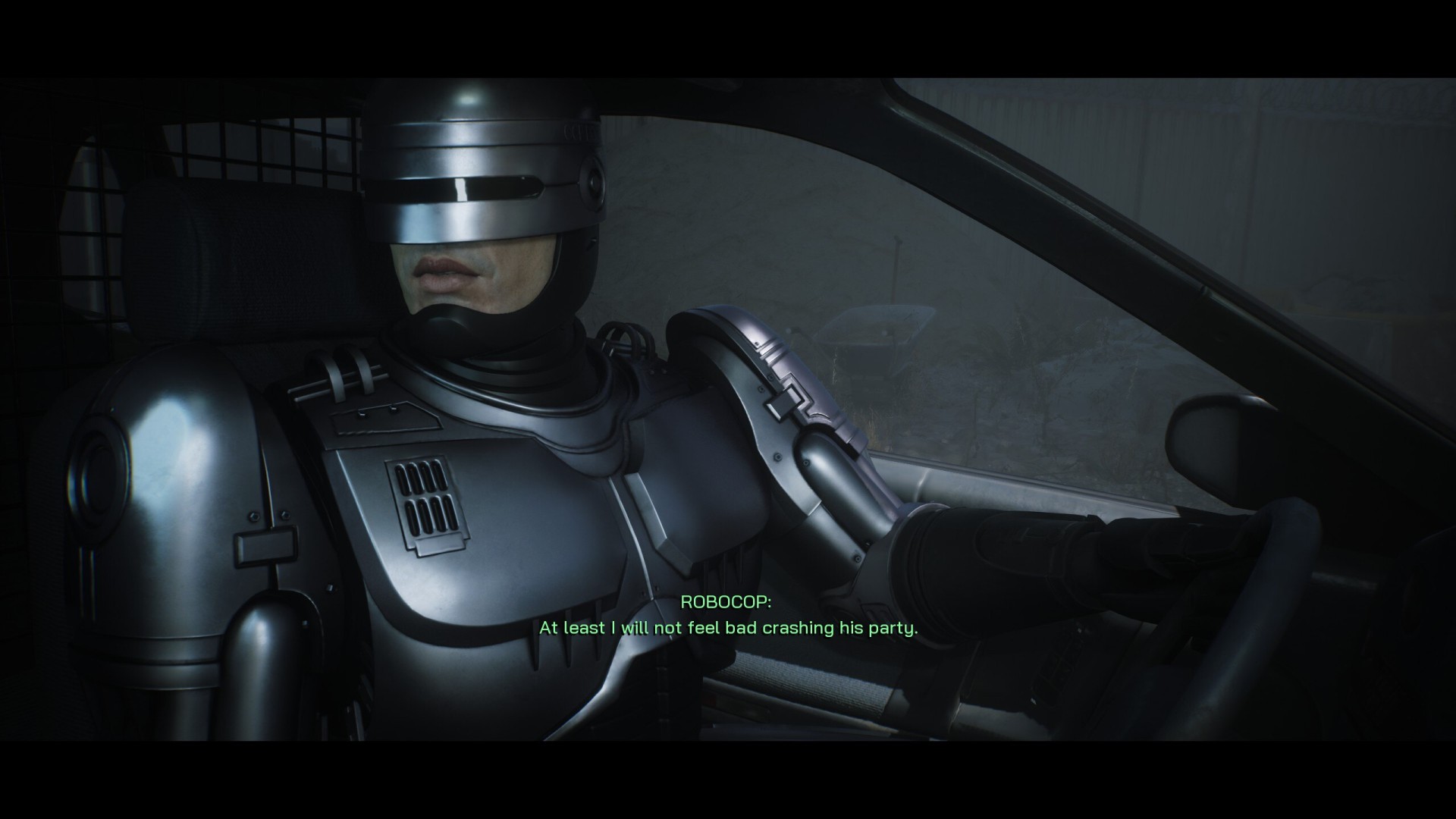
The story fits nicely in between the films and brings a narrative that focuses on how the once human now cyborg Alex Murphy is dealing with being RoboCop. An incident in the game’s opening scene that involves the Torch Heads gang taking hostages at a TV station involves RoboCop sustaining damage and leads to him suffering visions of his previous life as a human at various points in the game. This causes RoboCop to lose his efficiency in evaluating trouble and this is caught on camera by the press and shown to the people of Old Detroit. This causes the OCP to be concerned and so become more involved with the RoboCop project, with Max Becker forcing a monitoring chip to be installed to evaluate RoboCop’s performances, along with mandatory sessions with psychologist Olivia Blanche. This plays into the game as the objectives and side mission evaluation is done through the monitoring chip to reward players a grade based on whether they completed the additional objectives and upheld the law and public trust. These also work into dialogue options, with selected dialogue changing how people will look at RoboCop and the matter of how robots should be looked upon in the future. Should they have the same rights and liberties as humans? This is a topic the game touches upon, like the films, but is allowed more time to talk about this here in the structure of a game. As for the general story. It is fine, a passable standard, but fans will enjoy how the game keeps its themes close to the source material. Maybe too much, as there are a lot of repeated topics and scenes from the movies featured throughout the game’s 13-hour campaign, such as the ED-209 enforcement droid going rogue and having to take it down. Still, there is something fun about replicating something from the films but in video game format, and the last time there was a good RoboCop game was a long time ago.
Rogue City captures what I would imagine playing RoboCop would be like. On the normal difficulty, the game is not exactly challenging. I think I died twice throughout the game, and that was mainly due to long-distance snipers that I did not notice fast enough. This is a double edge sword, because on one hand playing as RoboCop, walking or “sprinting” (feels more like a fast walk due to the speed restrictions of RoboCop), is replicated wonderfully, and with his armour able to take a good amount of damage, along with items that replace this armour to charge the metre back up, it takes standard enemies a long time to take down the player. RoboCop, on the other hand, can decimate enemies with his Auto 9 and a few other guns. However, due to how well the game replicates being RoboCop, using other weapons feels worthless 90% of the time, as the Auto 9 is incredibly strong and can be modified later in the game with unlockable circuit boards that change the behaviour. At one point I had unlimited ammo in a clip, and another board made the Auto 9 fully automatic, making any human standing in front of me a bloody holey mess. This is made even more fun and overpowered as the Auto 9 has unlimited auto, with only the clip needing to be reloaded. All other guns have limited ammo and carry small ammo amounts, making them throwaway weapons compared to the main pistol. The Auto 9 delivers impact, as seen in RoboCop’s brutality, heads will explode and limbs will detach from enemies, fitting perfectly into the violent depictions seen in the films.
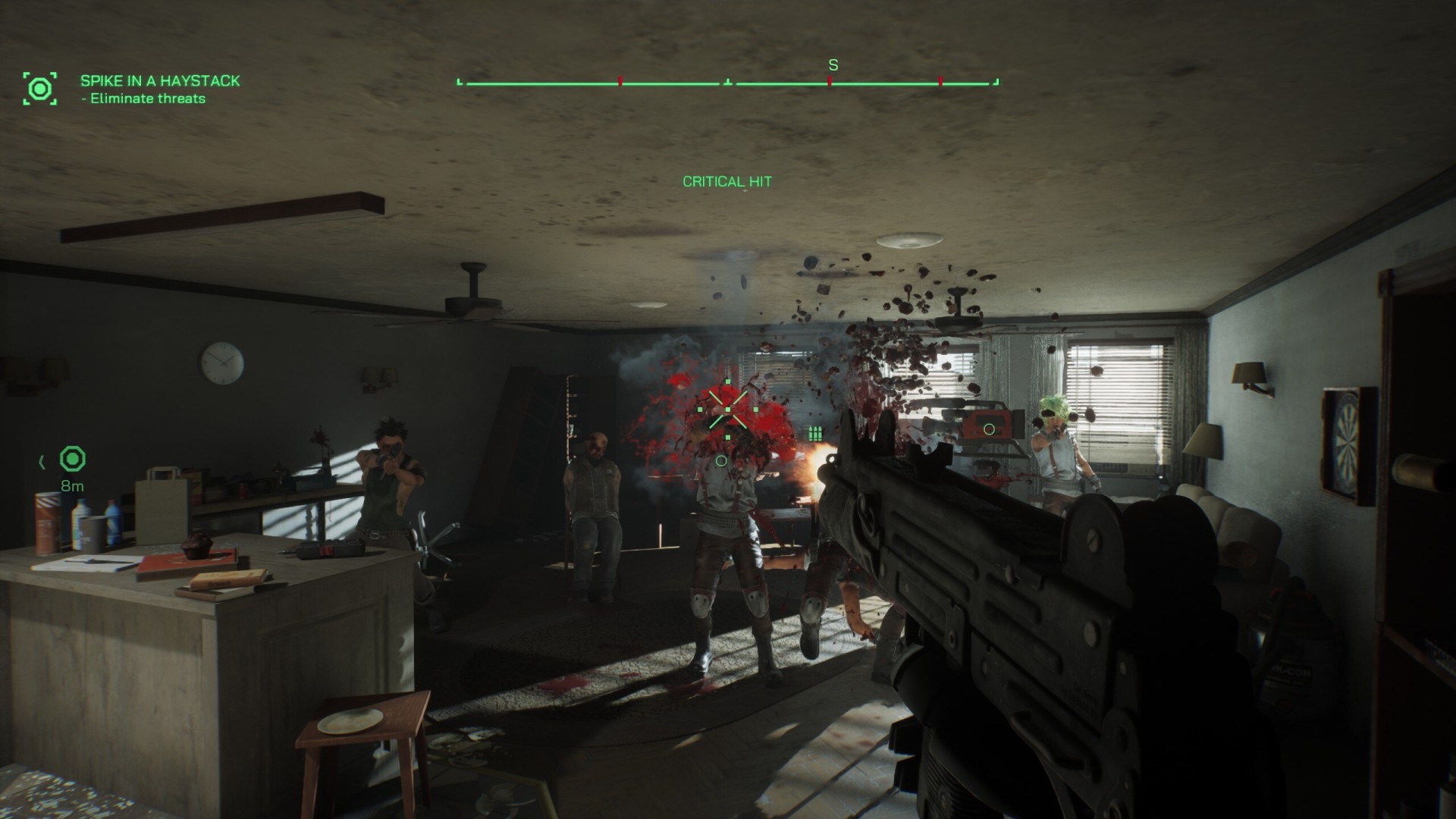
The question to ask is this the right way to present a RoboCop game? Teyon wanted to make sure the game was authentic, and what better way to do that than by making the default pistol the best weapon. The developers have tried to overcome the repetition of the pistol with the already mentioned Auto 9 modification features, but along with that are skills to RoboCop’s arsenal that are unlocked as the player levels up from experience gained in missions. These skills support gunplay by being able to blind enemies, protect RoboCop with a shield, perform a dash to move quickly, and the ability for slow motion. RoboCop can also interact with a few objects in the environment; tables, chairs, monitors, bikes, and many more, can be picked up and used to throw at the enemies to cause stun or damage. RoboCop can grab enemies as well and use them as shields or throw them into walls and other foes with force, often killing the poor gangster as their head bashes against the concrete. RoboCop feels like a tank, and the source material always made RoboCop seem like some badass hero who can take damage and be a threat to anyone breaking the law, and this game captures that perception well.
This is probably why the game is not just a straight-up arcade first-person shooter and features other mechanics to keep Rogue City interesting, as the combat itself is not the most in-depth for a first-person shooter. These are elements like the dialogue choices and the return to the police station after every mission to get some downtime with comrades to build up a little character. Set between linear missions are sometimes small open sections that allow the player to explore a small part of Old Detroit while searching for the mission objective. These small playgrounds include side missions and investigations to increase potential rewards at the end. These could be helping civilians or upholding the law by sticking parking tickets on cars or giving fines to people drinking in the public or being a nuisance. It offers a nice break from the power trip of being RoboCop in the combat sections and lets people have a little peace between the heavy action levels.
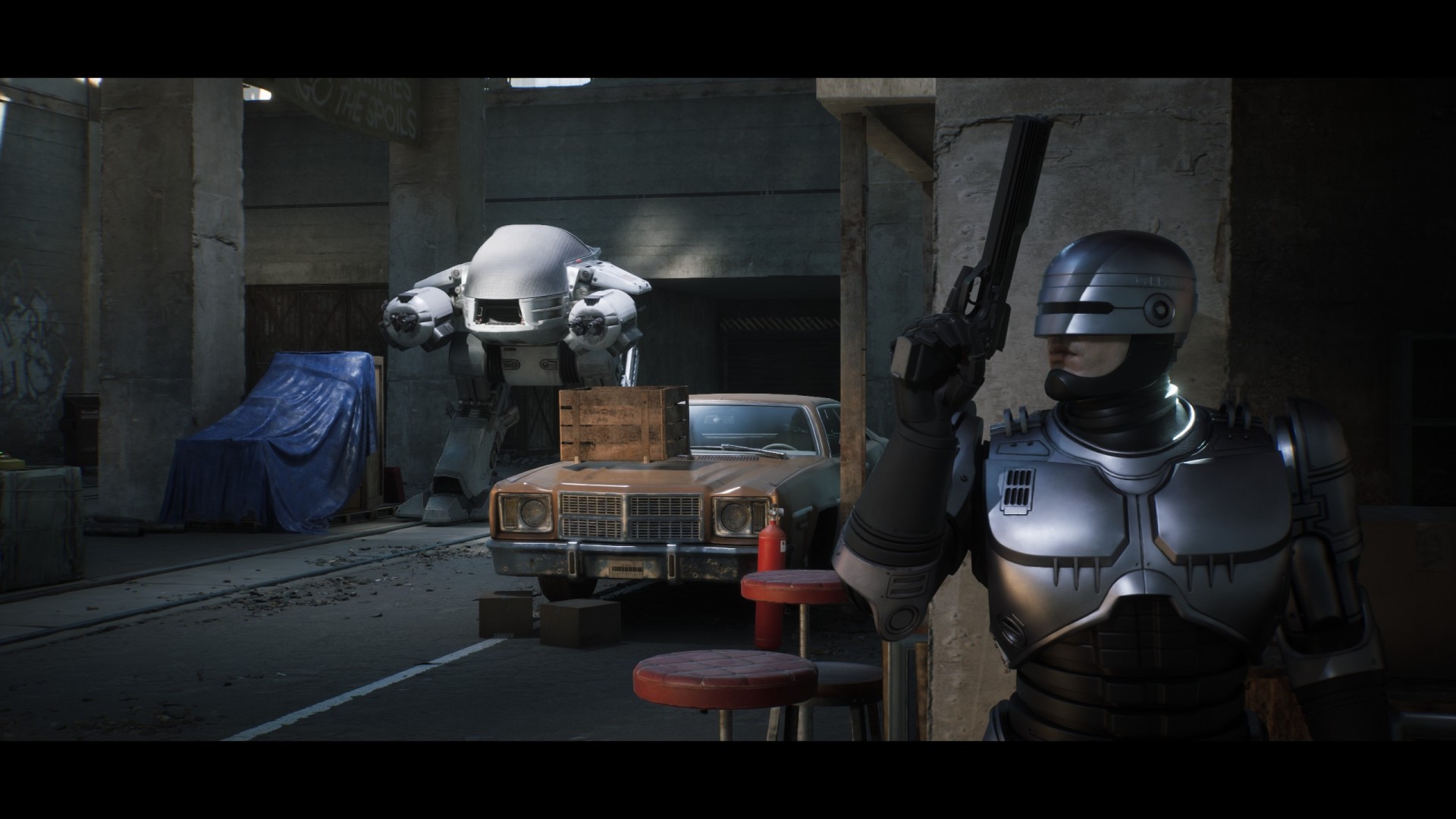
Combat can become a shower of destruction in both the open areas or the linear levels due to selectable elements of the environment being crafted to be destructible, causing bits to break off, such as walls, wooden plants and other areas that could be used as defence. RoboCop cannot crouch, so hiding behind tall pieces of the environment is often the way to cool down in a fight and use an armour repair to generate health back. One good scenario is in the Arcade Club where all the arcade machines are destructible, causing a mess of debris, dust and destruction. RoboCop’s aiming mode comes in handy here, as it causes the visuals to produce a visor filter that will highlight points of interest and enemies with boxes and green outlines. All very in line with the authenticity of RoboCop, but helps keep track of enemies when the dust and debris from the environment fill the compact rooms during gunfights, as players walk through the smoke and pop caps in the asses of everyone being a threat to him.
The last feature included is the light RPG mechanics that come in the form of the skill tree. The already mentioned experience from the mission reward adds to this, but performing actions, such as killing people, also builds experience. The skill tree covers categories such as combat, armour, vitality, engineering (opening safes), focus, scanning, deduction and psychology. The latter helps RoboCop understand people better, easier to see which dialogue options are the best to select while deduction improves the ability to find evidence in locked places and use electric power boxes on the walls to restore health. These mechanics add a little more to the game to take it away from being a simple mindless shooter.
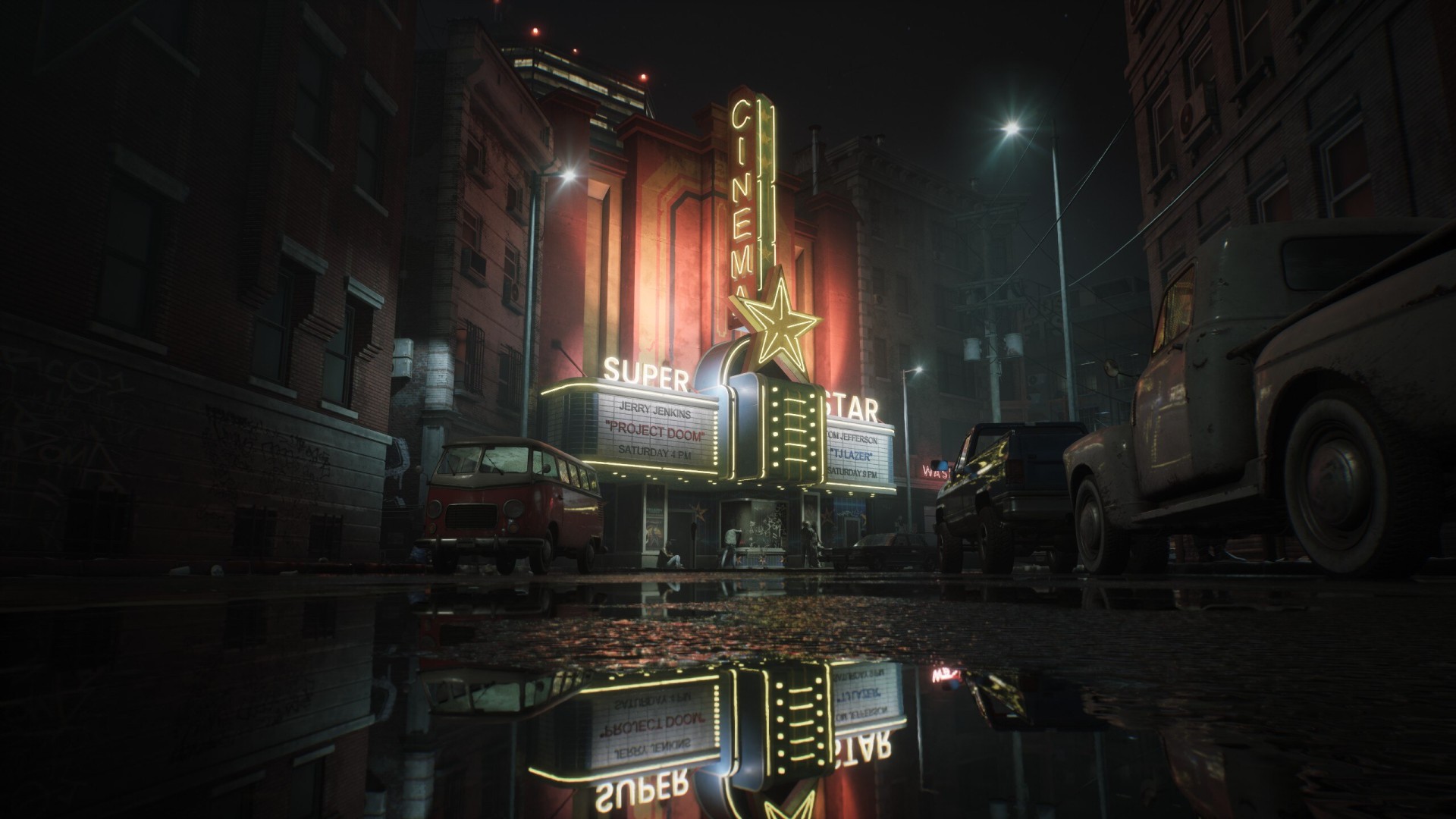
Rogue City uses Unreal Engine 5 and simply looks great for it. Along with the brilliant visuals and all the current generation fancy visuals that come with that engine, such as Lumen, Nanite and raytracing, with support for upscaling technologies, such as Nvidia’s DLSS and AMD’s FSR, to help with performance. The game is demanding at 4K resolution on maximum settings, with an Nvidia 4090 just about hitting 60fps, but with the support for DLSS and Frame Generation, this can easily be boosted. A warning on the Frame Generation, it adds weird sparkles around the subtitles when moving and some elements of the game have a ghosting effect that is a little distracting on the otherwise beautiful-looking environments. It would not be RoboCop without Peter Weller, and thankfully he has returned to the role by offering his voice, dropping those catchphrases in the soulless way that RoboCop is known for. This puts the final icing on the cake to make Rogue City a cool RoboCop video game.
When it comes down to it, RoboCop: Rogue City is aimed at fans of RoboCop. Teyon has made a game that does a great job of capturing the films and their visuals and sound, along with bringing a superb representation of what playing RoboCop would be like. The added use of Unreal Engine 5 gives the game the visual nicety that supports the artistic visions of the developers and the source material they are capturing. The issue with RoboCop: Rogue City is that making a game that stays so true to the IP brings some downsides, as being RoboCop does not make for the most compelling first-person shooter action, as being overpowered, while fun and hilarious, can take away some of the urgency that great first-person shooters have when playing a more vulnerable hero. The added features and extras on top of the action add some breaks between the gunfights, in what could become tedious if stretched for too long; thankfully, the campaign ends just when it begins to falter. For what it is worth for fans, RoboCop: Rogue City is a brilliant RoboCop game, but only a decent first-person shooter.
